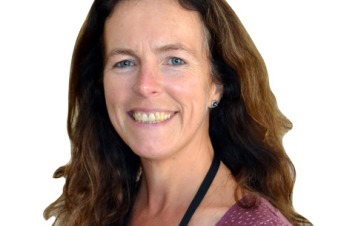‘A school playground is a vital space’, says Sir David Attenborough. So why are so many being lost in the rush for school places? Learning Through Landscapes Chief Executive, Juno Hollyhock finds out.

written by Juno Hollyhock (Learning Through Landscapes Chief Executive)
A map of England on my office notice board has large splodges of a warning shade of red. Urban areas, especially London, look particularly gory.
You might think the red shows the road traffic accidents, knife crime stats or fire arms fatalities associated with modern urban life.
Children’s basic needs
Instead of showing crime and disorder hotspots, the map shows areas where people’s basic needs are not being met – not too much of something but too little.
In most cases these ‘Basic Needs deficit areas’ have at least a 5% shortfall in the number of school spaces for children.
This is great news for manufacturers of modular temporary classrooms that can be sited almost anywhere to house the overspill of children needing lessons.
You can see these sprouting up across the country in children’s play grounds and sports fields like so many over-sized mushrooms.
Almost overnight more pop up spreading their fat port-a-cabin footprints across school grounds meaning wildlife ponds get filled in, football pitches are closed off, well drained grassy areas are concreted over and children’s play spaces are eroded.
Free schools, restricted children?
Then there’s Free Schools. In order to overcome premises issues, children attending new Free Schools no longer have the right to a school playground (the actual statement is that the schools no longer ‘have to provide’ those spaces – my language and interpretation is a little closer to that in the UN Convention on the Rights of the Child).
And dare we ask what happens to taxpayer-funded green space around schools if they all become academies and local authorities no longer maintain those schools?
Where will powers to manage, build on, or sell, the land assets lie? With the local authorities still but with little motivation and no staff to support? Reversion to the Secretary of State perhaps? Or will they transfer to the ownership of the Multi-Academy Trusts themselves possibly with all of the implications that may bring?
Children’s recreation can be taken elsewhere apparently. I understand the theory and, for PE and field trips, this may well be possible, but I hold fast to the view that most busy teachers will not have the time or the facility to take children off-site for their break and lunch times.
The implications of this are very damaging. I don’t know of many teachers who believe the way to a fruitful afternoon of focussed classroom study is to incarcerate children indoors for their lunch break.
I also think large numbers of children in confined spaces disproportionately increases incidences of poor behaviour. I am sure it used to be called overcrowding and was not acceptable.
There is no avoiding the fact that we have more children now than we have school places and it is going to get worse, not better. We would be foolish to cross our arms, stamp our feet and wave the ‘it’s not my problem’ flag.
This is why initiatives such as Sowing the Seeds are so important right now.
Unless we protect and promote children’s right to play in nature near to their homes at a time when they are not necessarily accessing nature in school then we will be raising a generation of children who don’t really know what nature is.
And if they do not know and appreciate nature they will not protect it as they grow up.
As Sir David Attenborough says in our short Basic Needs film, if they do not protect it who will?
